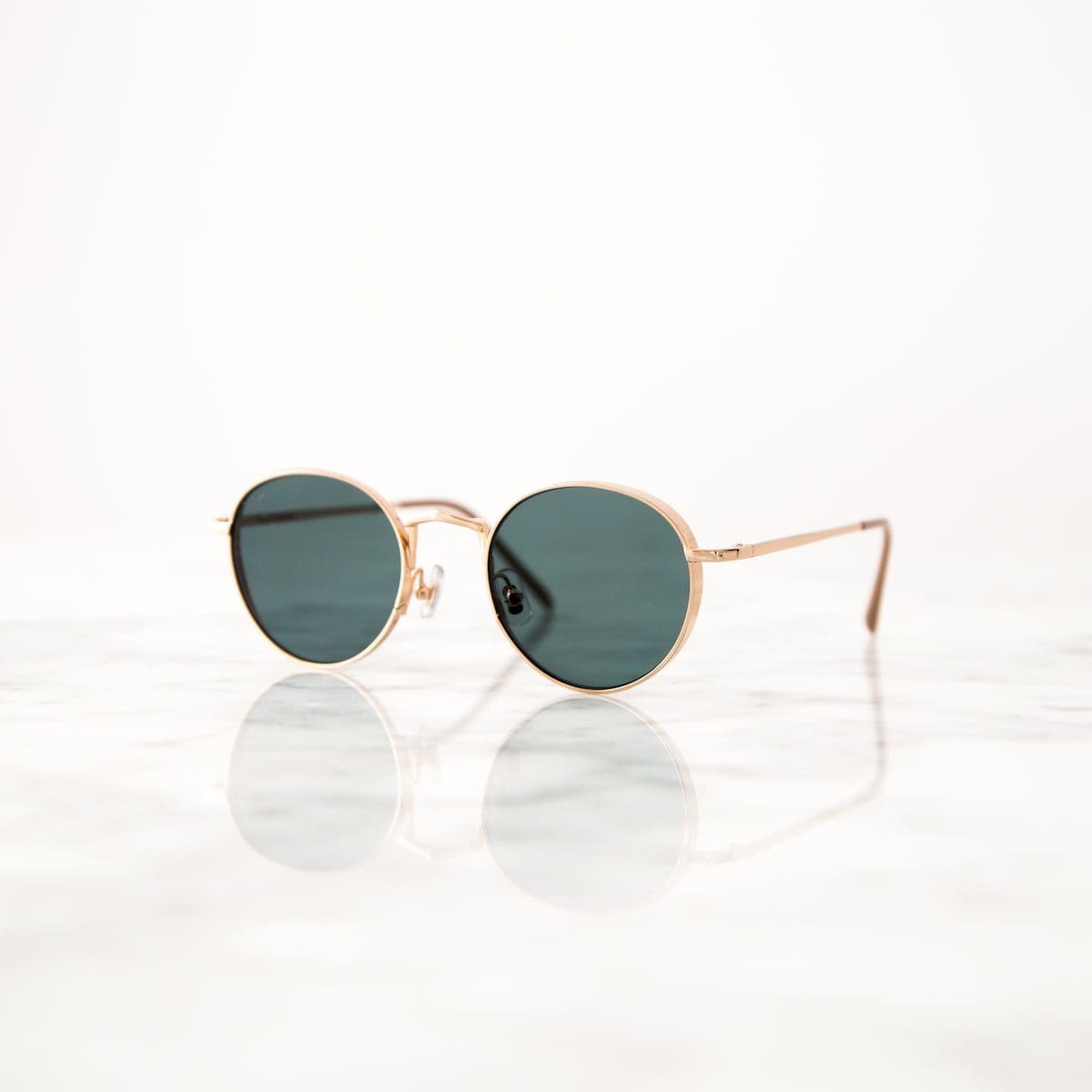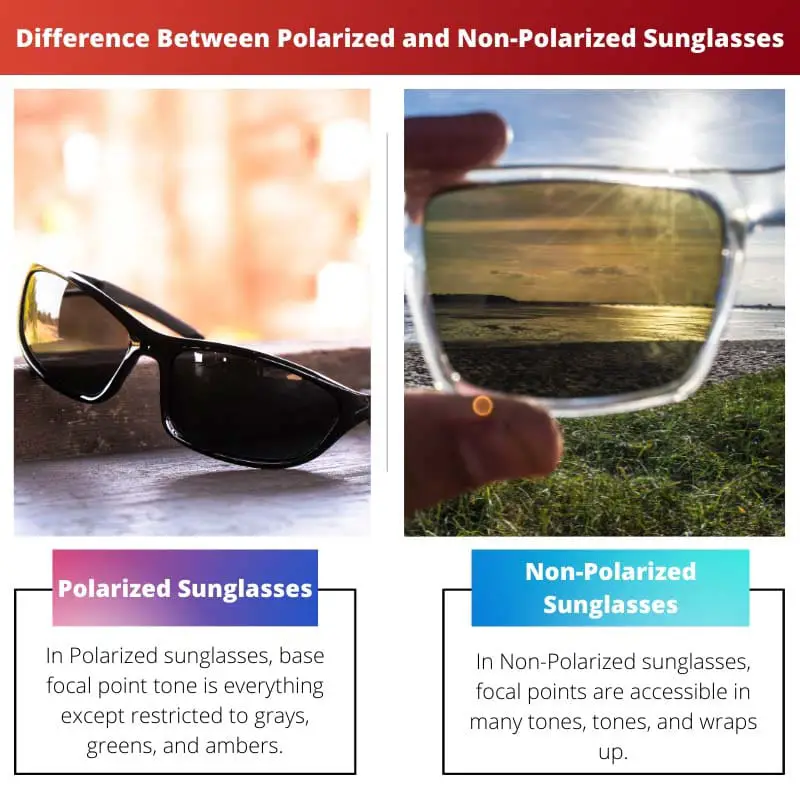For some individuals, shades are one of the basic weapons in summer. Regardless of whether you are going to the seashore for swimming or going for an outside excursion, wearing a couple of stylish shades will make you more in vogue.
Particularly in summer, to more readily ensure their eyes and try not to be harmed by the sun’s bright beams.
Key Takeaways
- Polarized sunglasses reduce glare by filtering out horizontal light waves, improving visual comfort.
- Non-polarized sunglasses provide general protection from UV light but do not eliminate glare.
- Polarized sunglasses are particularly useful for water sports, driving, and outdoor activities where glare can hinder vision.
Polarized Sunglasses vs Non-Polarized Sunglasses
Polarized sunglasses have a special filter that blocks horizontally oriented light, which is reflected off of flat surfaces like water or snow, causing glare. Non-polarized sunglasses do not have this special filter and are simply tinted to reduce the amount of light that enters the eyes. These sunglasses can provide some level of protection from harmful UV rays.

Polarized sunglasses can sift through this sort of light, just ingest the mirrored light of the actual article, and really present what you see, making the field of vision more clear, subsequently diminishing visual weakness.
Also, as a result of its high-productivity channel layer, energized shades have an impending pace of almost 100% against bright beams, which can viably lessen the harm of bright beams to the eyes.
Non-polarized sunglasses commonly just have the two essential elements of protecting solid light and sifting bright beams. In this way, their proficiency in separating bright beams is moderately low.
In any case, do you realize that in our day-by-day life, notwithstanding solid light and bright light, the light will produce sporadic diffuse reflections by going through lopsided streets and water surfaces, which will cause obscured vision and eye weariness?
Comparison Table
| Parameters of Comparison | Polarized Sunglasses | Non-Polarized Sunglasses |
|---|---|---|
| Safety | It ought to be noticed that driving with polarized sunglasses in certain blanketed or frigid conditions can be less protected than utilizing the non-polarized sunglasses option. | It ought to be noticed that driving with Non-polarized sunglasses in certain blanketed or frigid conditions can be more protected by utilizing the polarized sunglasses option. |
| Reflection | Polarized sunglasses additionally channel encompassing light yet go further by offsetting brilliant reflected light. | Non-polarized lenses treat all daylight similarly and lessen the general force. This offers security for the eyes yet won’t handle shine and shimmer in case you’re around water, snow, or glass. |
| Shade | Polarized sunglasses upgraded vision lucidity and shading virtue. | Shading and lucidity will not be close to as upgraded in Non-Polarized sunglasses. |
| Color | In Polarized sunglasses, base focal point tone is everything except restricted to grays, greens, and ambers. | In Non-Polarized sunglasses, focal points are accessible in many tones, tones, and wraps up. |
| Price | Polarized sunglasses are a lot costly. | Non-Polarized sunglasses are a lot less expensive. |
What are Polarized Sunglasses?
The vital benefits of Polarized Sunglasses are their capacity to sift through unforgiving glare and reflections. At the point when daylight enters our climate, it dissipates until it gathers or becomes focused on level surfaces.
This recently focused daylight is likewise alluded to as energized light. Captivated light is radiated as brilliant, even glare that can present critical vision issues, including waterfalls, macular degeneration, or photokeratitis (snow visual deficiency).
In any case, polarized shades sift through the glare, which thus improves your field of vision by making more keen pictures and permitting the unadulterated shade of your environmental elements to arrive at your eyes.
It’s these characteristics that put them in their very own group when contrasted with other sunglass lenses.
The clearest downside here is the expanded expense of spellbound focal points.
The assembly interaction is significantly more muddled than that of normal colored focal points, and this causes the occasionally uncommon cost increment ( all the more further down).
What we need to zero in on explicitly is the possibly risky presentation characteristics related to these energized focal points.
Basically, enraptured focal points and LCD shows don’t manage everything well. Truth be told, polarized shades will make a few screens found in vehicles, large equipment, and planes difficult to peruse.
While the initial two occurrences are, for the most part, irritating, the last two can represent some conspicuous higher dangers.

What are Non-Polarized Sunglasses?
Non-Polarized Sunglasses will be unable to contend with their elite partners, yet they actually offer numerous considerable advantages and strong insurance.
Shades are essentially critical to vision wellbeing as they help to shut out brilliant daylight and, all the more significantly, unsafe UV light.
In as much as customary colored shades have a 100% UV insurance rating, alluded to as UV400, you will be no less secure contrasted with Polarized sunglasses with a similar degree of UV assurance.
Truly, the solitary genuine downside of non-energized focal points is the reality they can’t sift through brutal glare and reflections from surfaces like streets, water, snow, and vehicles.
Along these lines, you can surely still experience eye fatigue and foster cerebral pains after sufficient openness, even while wearing dimly colored shades.

Main Differences Between Polarized and Non-Polarized Sunglasses
- It ought to be noted that driving with polarized sunglasses in certain blanketed or frigid conditions can be less protected than utilizing the non-polarized sunglasses option.
- Polarized sunglasses additionally channel encompassing light yet go further by offsetting brilliant reflected light, while Non-polarized lenses treat all daylight similarly and lessen the general force. This offers security for the eyes yet won’t handle shine and shimmer in case you’re around water, snow, or glass.
- Polarized sunglasses upgrade vision lucidity and shading virtue while shading and lucidity will not be close to as upgraded in Non-Polarized sunglasses.
- In Polarized sunglasses, the base focal point tone is everything except restricted to greys, greens, and ambers, while in Non-Polarized sunglasses, focal points are accessible in many tones, tones, and wraps up.
- Polarized sunglasses are a lot of costly, while Non-Polarized sunglasses are a lot less expensive.

- https://link.springer.com/content/pdf/10.1007/978-0-387-75107-8_10.pdf
- https://journals.lww.com/jlgtd/Fulltext/2010/07000/Enhancing_Colposcopy_With_Polarized_Light.1.aspx

This article effectively communicates the importance of polarized sunglasses in reducing glare and reflections, particularly for outdoor activities. The comparison between polarized and non-polarized sunglasses provides clarity for readers.
The potential downsides of polarized sunglasses, such as their higher cost and potential issues with LCD displays, are important considerations for consumers. This article highlights the importance of weighing the pros and cons of polarized lenses.
The detailed explanations of polarized and non-polarized sunglasses in this article are incredibly informative and offer valuable insights for readers. The comparison table is particularly helpful in understanding the differences between these types of eyewear.
The emphasis on the safety considerations for driving with polarized and non-polarized sunglasses in certain conditions is a crucial aspect of this article. It’s essential for readers to be aware of these factors when choosing sunglasses for different activities.
This article serves as a valuable resource for those seeking to understand the benefits and drawbacks of polarized and non-polarized sunglasses. The detailed explanations and comparison table offer a comprehensive view of these eyewear options.
This article does an excellent job of explaining the difference between polarized and non-polarized sunglasses and their respective benefits. It’s important to understand the science behind these sunglasses to make informed decisions when choosing a pair for eye protection.
The in-depth exploration of the advantages and disadvantages of polarized and non-polarized sunglasses in this article is highly informative. It provides readers with a clear understanding of the factors to consider when choosing sunglasses for different purposes.
The comprehensive overview of the benefits and drawbacks of polarized and non-polarized sunglasses offers valuable insights for readers. This article is an informative guide for anyone looking to understand the differences between these types of eyewear.
I appreciate the detailed explanation of how polarized sunglasses filter out glare and reflections. This article provides a thorough understanding of the benefits of polarized sunglasses for vision clarity and protection from UV rays.
The comparison table provided here is very useful for understanding the differences between polarized and non-polarized sunglasses. It’s important to consider these factors when deciding which type of sunglasses to purchase.